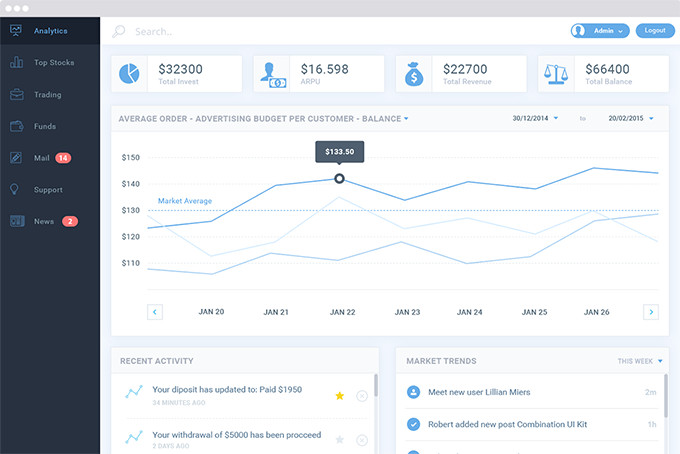Software quality assurance services
We deliver flawless software with confidence. We stand for a professional and holistic approach to Quality Assurance Services and the number of bugs reduced to zero before release.
Full-spectrum QA strategy
SumatoSoft offers a full-spectrum QA strategy tailored to your project’s needs. We combine manual software testing expertise with efficient test automation services, all while adhering to rigorous standards and aligning with your development process.
Manual testing
Not everything can be automated, that’s where our meticulous manual software testing comes in. Our QA specialists simulate real user behavior to catch issues that scripts might miss. They conduct:
- exploratory tests;
- usability evaluations;
- and complex scenario checks to ensure the software behaves correctly in all cases.
Manual software testing is indispensable for validating user experience and visual aspects: for example, app store guidelines require apps to function correctly on real devices, and our testers make sure your application meets those criteria.
By executing test cases by hand when needed, we identify subtle non-functional defects (like UI glitches or confusing workflows) that could negatively affect user satisfaction. Every project benefits from the human insight our testers provide – there’s simply no substitute for a trained QA engineer’s eye in finding issues that automated tests might overlook.

Automated testing
For repetitive, high-volume, or regression test scenarios, SumatoSoft leverages robust automated software testing. Our QA engineers write scripts and build automated test suites to accelerate the QA process and reduce costs on an ongoing basis. Test automation is ideal for:
- projects with frequent releases (e.g. multiple deployments per month);
- projects with large test datasets, where running hundreds of routine actions (like creating dozens of new users or transactions) needs to be fast and error-free.
We implement automation using proven frameworks and tools (Selenium WebDriver, TestNG, etc.) to continuously re-run critical tests whenever code changes occur. The key objective of automation is ROI: we apply it in areas that genuinely save time and money.
Our approach is pragmatic – if automating a test will cost more than it saves, we’ll recommend keeping it manual. By smartly applying automation, we ensure rapid feedback for your developers and consistent regression coverage without inflating the budget. The result is faster release cycles with confidence that new code hasn’t broken existing features.

Compliance with standards
Our QA strategy is not only comprehensive but also compliant with stringent industry standards and regulations. We follow both formal quality standards (like the ISO 9000 series for quality management) and well-established QA best practices throughout the development lifecycle.
This means our process aligns with any regulatory requirements your project may face – for example, we understand healthcare, finance, and other regulated industries have specific compliance checkpoints.
SumatoSoft’s quality assurance approach is built to meet the highest bar of excellence in any environment, ensuring that software quality and safety standards are fully met for your project. From security testing to data integrity checks, our QA services make sure your application is enterprise-ready and compliant from day one.

Get a Free QA Quote
Discover how our tailored QA can fit your budget.
Team credentials & QA leadership
Your software quality is only as strong as the team behind it. At SumatoSoft, QA is led by experienced engineers who understand both the technical and business side of software testing. We don’t outsource quality – we build it in.
70% senior-level QA engineers
Cross-functional collaboration
Internal QA playbook
Ongoing training & certifications
Lead involvement from day one
Different solutions need different Quality Assurance (QA) services
Different projects have different testing needs. Our team is proficient in all major types of software testing, and we tailor the testing service mix to fit your product:
Functional testing
We verify every feature and interaction in your application to ensure everything works as expected. This covers all levels of software testing – from individual units and integration tests to system and acceptance testing services, validating that the software meets the functional requirements.
- integration testing;
- acceptance testing;
- compatibility testing;
- access control testing.
Non-functional testing
Beyond features, we examine how well your application operates under real-world conditions. During our QA services, we check how your software behaves under real conditions: how fast it works, how stable it is during high load, how well it handles errors, and whether there are any security risks.
- performance and load testing;
- usability testing;
- security testing;
- cross-platform testing.
Regression & change-related testing
Every time your software evolves, we make sure new updates don’t introduce new problems. Our QA engineers perform rigorous regression software testing after changes or enhancements, re-running test suites to catch any unintended side effects. We also carry out build verification testing (sanity/smoke tests on new builds) to quickly assess if critical functions are intact before delving into deeper software testing.
- regression testing;
- build verification testing;
- sanity testing.
Our QA services
SumatoSoft offers flexible QA engagement models that fit any project stage, team setup, or quality challenge. From full-cycle software testing ownership to on-demand support, we ensure your software meets the highest performance, reliability, and compliance standards – with clear responsibilities, strong communication, and measurable outcomes.
QA outsourcing
We take full ownership of your quality assurance process. That includes designing the QA strategy, building test plans, executing manual and automated tests, managing test environments, documenting bugs, and delivering quality reports.
You don’t manage testers – you manage outcomes.
This model is ideal when:
- you want to delegate QA without building an in-house team;
- you need guaranteed coverage across platforms, devices, and user flows;
you want consistent reporting and one point of contact.
What you get:
- dedicated QA team;
- complete test documentation and reports;
- bug tracking in your system or ours;
- seamless integration with your release cycle.
QA consulting
You may already have a QA team – but it may be too slow, too manual, or not aligned with business goals. As a part of services, our QA consultants audit your process, identify inefficiencies, and suggest improvements tailored to your product and team setup.
We help you test smarter, not just more.
This model is ideal when:
- QA exists, but quality issues persist;
- automation isn’t saving time;
- coverage is unclear or not measurable.
What you get:
- independent review of QA practices from a professional QA service provider;
- toolchain and test strategy recommendations;
- roadmap to optimize QA with ROI in mind;
- optional training sessions for your team.
Managed testing services
We take responsibility for part or all of your testing operations under your guidance. You define priorities – we manage execution through our QA services.
We can own regression testing, functional test cycles, test automation, or end-to-end software testing across devices. You get a team that scales with your workload.
This model is ideal when:
- you want control over the process, but not the daily execution;
- your product requires frequent software testing cycles;
- internal teams are overloaded or missing expertise.
What you get:
- scalable QA team;
- test coverage aligned with your release plan;
- detailed weekly/monthly QA reports of our service results;
- ongoing coordination with your internal dev/QA leads.
QA as a service
We provide on-demand QA engineers who integrate into your product team temporarily or long-term. You decide how many hours, what skills, and when you need them.
This service type is perfect for agile releases, sprint-based work, or critical deadlines.
This model is ideal when:
- you need fast QA support for upcoming launches;
- project load fluctuates;
- you need specific skills (e.g., mobile, API testing, performance testing).
What you get:
- QA resources available within days;
- hourly or sprint-based engagement;
- seamless onboarding and tool alignment;
- transparent time tracking and delivery logs.
Quality assessment
We start our servicing by independently evaluating your software, focusing on risk, compliance, and overall quality. This includes exploratory software testing services, code and UX audits, standards checks (e.g., OWASP, HIPAA, WCAG), and full documentation of what’s wrong – and how to fix it.
This model is ideal when:
- you inherited software with unknown quality;
- you’re preparing for certification or public release;
- you want an external perspective on technical health.
What you get:
- quality scorecards by area (UX, performance, security, etc.);
- critical, major, and minor issue breakdown;
- prioritized action list;
optional post-audit support services for resolution.
QA process audit
During these services, we assess how your quality assurance currently works: people, processes, tools, documentation, and test results.
Then we give you a report that shows what’s working, what’s wasting time, and what needs fixing – with a practical roadmap.
This model is ideal when:
- you’re unsure how effective your QA actually is;
- bugs reach production too often;
- QA overhead feels high without visible benefits.
What you get:
- end-to-end audit of your QA lifecycle;
- benchmarks against industry standards;
- quick wins and strategic fixes;
- optional help implementing changes.
Test automation setup
We design and implement your entire test automation architecture – from selecting the right tools and frameworks to writing robust test scripts and connecting test runs to your CI/CD pipeline.
We don’t just write tests – our services allow us to create a system that runs without hand-holding.
This model is ideal when:
- you’re starting automation from scratch;
- existing automation is flaky or underused;
- you need regression coverage to speed up releases.
What you get:
- test plan prioritizing what should be automated;
- script libraries with reusable components;
- integration with Jenkins, GitHub Actions, Bitbucket Pipelines, etc.;
- training for your devs or QA team to maintain it.
Continuous testing integration
We help you shift QA left. That means embedding automated and manual tests into your development pipeline – so bugs are caught early, not days before release.
We enable constant validation, not occasional reviews.
This model is ideal when:
- you work in sprints or follow CI/CD practices;
- you need fast feedback after every commit;
- releases happen weekly or even daily.
What you get:
- test hooks at each stage of the delivery pipeline;
- alerting and dashboards tied to test outcomes;
- collaboration with DevOps and product teams;
- faster, safer releases.
Specialized testing services
SumatoSoft offers a wide range of targeted software testing services to cover specific technical and business risks. Each service is run by QA engineers with domain experience and follows structured test cases, clear reporting, and tool-based execution where applicable.
Test automation
We write test scripts that run automatically, reducing time spent on repetitive checks. This service speeds up releases, improves test coverage, and ensures critical functions are always verified, even in daily deployments.
Performance testing
This service includes checking how the system behaves under different loads: how quickly it responds, how much traffic it can handle, and what breaks under stress. The service is useful for apps with high traffic, data-heavy operations, or strict uptime requirements.
Security testing
We look for weak points in how the system handles data, authentication, sessions, and permissions. This service helps prevent data leaks, access control issues, and attacks like injection or spoofing.
Functional testing
We check that the software does what it’s supposed to do – at the level of components (unit), modules working together (integration), and the full system (end-to-end). All based on business and technical requirements.
Regression testing
Each time something changes in the code, we re-run selected test cases to make sure nothing that used to work has broken. Regression testing service is especially important for frequent releases.
Compatibility testing
We test the app on different browsers, operating systems, screen sizes, and devices. The goal is to catch layout bugs, rendering issues, or platform-specific behavior that could affect usability.
API testing
We test your APIs directly – checking how they respond, how fast they are, how they handle bad input, and how well they recover from failures. This ensures that integrations between systems are stable and predictable.
Mobile app testing
We test mobile apps on real devices and emulators to check how they behave across screen sizes, OS versions, network types (Wi-Fi, 4G, offline), and battery levels. Our services cover both Android and iOS.
Accessibility testing
We verify that people with disabilities can use the product. Our services include screen reader support, keyboard navigation, color contrast, and compliance with standards like WCAG 2.1.
IoT testing
We test how well connected devices communicate, sync, and respond to commands. We also check behavior during signal loss, firmware updates, and multi-device coordination.
AI testing
We validate how AI systems behave in real use cases: whether models return correct results, whether edge cases are handled, and whether outputs are explainable and consistent. We also check model integration with other parts of the app.
Blockchain testing
We test smart contracts for correctness, gas optimization, and attack vectors. For blockchain-based apps, we check transaction logic, wallet handling, network behavior, and error cases.
Cloud-based application testing
We simulate real-world usage in cloud environments to test for autoscaling, failover, latency, and multi-region consistency. Helps ensure uptime and responsiveness under variable loads.
Usability testing
We observe how real users interact with the software to find confusing flows, unclear labels, or unnecessary steps. Focused on real tasks, not just UI layouts.
Localization and internationalization testing
We test whether the app correctly adapts to different languages, date formats, currencies, and cultural expectations – and whether translation causes layout or functionality issues.
Benefits of SumatoSoft quality assurance services
Quality proven with numbers
We only release the software if it meets the specified percentage of acceptance criteria. The percentage is agreed upon with you in the quality assurance strategy.
We work transparently
We communicate weekly, run demos of the work done, provide several contact points, send timesheet reports every month even if you don’t request them, explain potential risks and help to handle them, advise on the decisions, and help to avoid unnecessary costs.
Reduced future risks
Tested software comes without critical bugs and blockers that can negatively affect further software development and use.
98% Client satisfaction rate
This is the percent of our Clients that are satisfied with the quality assurance services we provide.
70% of senior specialists
SumatoSoft senior-level QA engineers ensure the app complies with domain best practices and our inner quality assurance guidelines. Better quality means happier users.
Start Your QA Journey
Partner with experts for reliable, high-quality software.
Expertise in business domains
Over the past decade, we’ve gained in-depth domain knowledge in over 11 sectors. What does this mean for you? We understand the unique challenges and requirements of each domain. Our QA engineers adapt test strategies to your industry’s context – for example, ensuring HIPAA compliance and data security in healthcare apps, or handling the complex transaction flows and PCI DSS standards in fintech software. By leveraging our experience in diverse business domains, we can quickly identify risk areas and apply best practices that are proven in your field. The result is a QA process finely tuned to your product’s use case and audience, delivering reliable software no matter the industry.
AdTech & Marketing
FinTech
Logistics
Healthcare
Media & Entertainment
Automotive
eCommerce & Retail
Travel & Hospitality
EdTech
Real Estate
Key principles of our QA process
Our quality assurance methodology is guided by core principles that ensure excellence in every project:
Best practices & standards
We apply industry best practices in software testing and adhere to both formal and informal quality standards to meet your project requirements. From test design techniques to documentation, our process is aligned with what works best in the QA field – and tailored to your needs.
Continuous process improvement
We believe there’s always room to refine and improve. SumatoSoft constantly enhances its internal QA processes – lessons learned from each project are fed back into our methodology. This commitment to improvement means you benefit from the latest techniques and an ever-improving service that keeps pace with evolving technology.
User-centric approach
Quality isn’t just about code – it’s about the end user’s experience. Our testers always consider the product from the user’s point of view, ensuring the software is intuitive and fulfills user expectations in real-world use. By maintaining a user-oriented perspective, we help you deliver a product that not only works correctly but also delights its users.
Excellence in execution
“Good enough” is not in our vocabulary. We strive for QA process excellence, meaning strict attention to detail in test execution, thorough documentation of defects; clear communication with your team. We actively control and improve our QA and software testing processes at every step. This principle ensures that our software testing is consistently effective and that no critical issue goes unresolved.
Quality assurance as part of Agile development
We embed QA deeply into the development process to support modern Agile and DevOps workflows. Quality assurance and coding go hand-in-hand in our approach. Our QA specialists collaborate with developers from the beginning, helping define clear, executable requirements for each sprint. By participating in sprint planning and daily stand-ups, our testers ensure that software testing isn’t an afterthought but a continuous activity alongside development.
Risk reduction: guarantees and metrics
We don’t promise vague “quality.” We reduce real risks – the kind that cause project delays, user churn, compliance failures, and production incidents. Below are the guarantees and metrics we apply across QA projects to make quality measurable and accountable.
Zero critical defects at release
24–48h bug confirmation
<2% bug reopen rate
Weekly QA reports with metrics
Security checklist applied before release
Retesting within 1 working day
Real-device testing always included
Response time guarantees (for dedicated QA teams)
Tools & Techniques that empower our QA
To provide top-notch QA services, the right tools and techniques are essential. SumatoSoft’s QA engineers have mastered a wide range of software testing tools – at least 18 tools for manual testing and 4 frameworks for automated software testing. This extensive toolkit allows us to choose the optimal tools for your project rather than a one-size-fits-all solution. Equally important are the techniques and processes we follow alongside tools:
- we maintain well-established bug management practices, using modern issue tracking systems to log, track, and resolve defects efficiently;
- we integrate software testing into continuous integration (CI) pipelines, so tests run automatically on new code commits;
- security testing is embedded in our QA process – we proactively probe for vulnerabilities and ensure compliance with security best practices;
- we follow a shift-left testing philosophy – planning and starting software testing activities early in the project;
- every project begins with a clear quality assurance strategy, so software testing is planned methodically and aligned with your goals;
- we emphasize cost optimization in software testing – avoiding unnecessary or redundant tests and focusing on high-impact areas.

Manual testing tools

Automation testing tools
Talk to a QA Expert
Get personalized advice for your unique project needs.
Our recent works
Quality assurance services for complex CRM


Transportation management system


Graphical user interface for robot operation


Rewards & Recognitions
Frequently asked questions
What is Quality Assurance?
Quality Assurance in software is a set of activities that focuses on preventing quality failure at every stage of software development. Quality control, in turn, is a part of quality assurance services. Its purpose is to check if the software quality meets pre-agreed quality requirements.
What type of QA do I need?
The primary quality assurance services we recommend for every project are QA strategy development, acceptance testing, graphical user interface testing, and functional testing. Since there are more than 15 types of quality assurance and control activities, the exact choice of the types depends on the project requirements.
What are quality assurance standards?
Quality assurance standards are sets of formal and informal guidelines to ensure the software product meets its purposes and has few bugs. Companies that offer quality assurance services apply these guidelines in all development stages, from discovery to store release. An example of an official standard is ISO 9000.
Why is SumatoSoft a top-quality provider of quality assurance services?
SumatoSoft has earned its reputation as a premier provider of quality assurance services, not through self-promotion, but through recognition from esteemed analytic agencies like Clutch and GoodFirms. Our commitment to excellence is further reflected in the glowing testimonials from our satisfied clients, including many from the US, who have given us a 4.8 rating on Clutch and a perfect 5 on GoodFirms. Our tailored approach ensures that we meet the specific needs and standards expected by American businesses, solidifying our position as a trusted partner in the US market.
Let’s start
If you have any questions, email us info@sumatosoft.com














